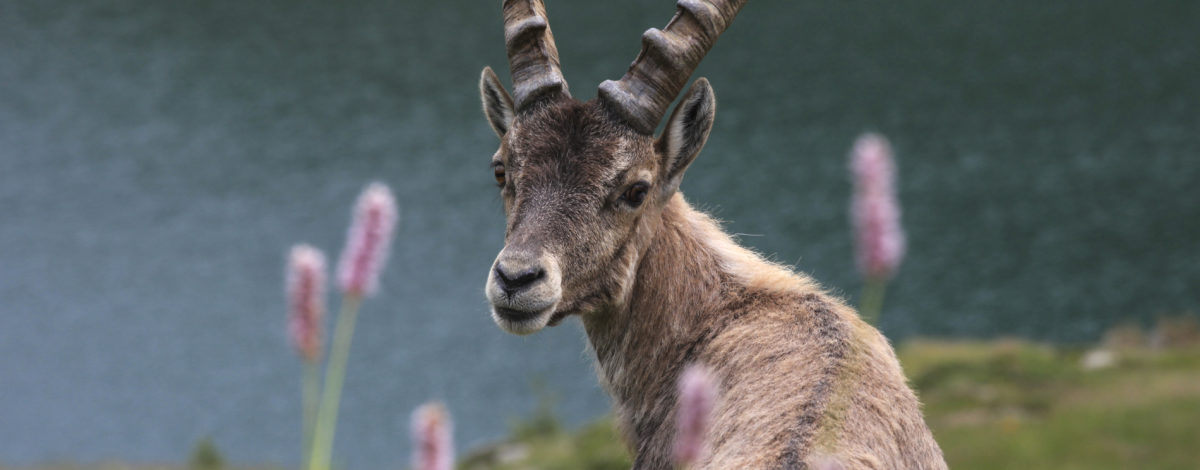Take a tour into Bergamo’s wilderness: here are the creature you can meet!
Whether it is the whistle of a marmot, the flight of an eagle or the walk of an ibex on Lake Barbellino’s vertical dam wall, there are many possibilities to get in touch with the wild animals that live in the Bergamo area.
The faunistic heritage of the Orobic territory is rich, you can meet special animals in every habitat, whether it be the mountains, the city, the lake or the plain.
Bergamasco Shepherd
Walking through the city streets it is not uncommon to see a Bergamasco Shepherd, the canine breed that originates right in our Pre-Alps, with very ancient origins: it is depicted in a painting attributed to Lorenzo Lotto. The hair is its particularity and gives it a rustic look: long and abundant, especially in the back where they form the “dreadlocks”, hair curls impenetrable to water…You will notice it without a doubt! They are great company for children and the elderly.
ON THE OROBIE
The Orobie Bergamasche Park, with its 70000 hectares, is home to many species of animals. Walking along the paths you can hear the whistling marmots and meet chamois and ibex as they climb the rocks, sight mouflons, badgers, stoats, deer, martens, weasels and foxes. There are also numerous birds that populate the valleys: the golden eagle, the buzzard, the black grouse and other rare species, such as the pygmy owl and the boreal owl. Brown bear sightings are more and more frequent: they are dispersal specimens coming from the east that periodically cross into the territory of the Orobie Park.
One of the most interesting places to observe these animals is in Valbondione at the Maslana fauna and flora observatory that every year hosts interesting events and workshops dedicated to the discovery of wildlife.
GOAT OROBIC
The Orobie also have their own goat. It is an excellent grazer in the high alpine pastures and has returned to breeding for some years: its peculiarity is the long hair that varies in colour depending on the breed.
IBEX
The boss of Bergamo’s Orobie. Reintroduced 30 years ago, today there are more than 1000. From the impressive horns, the ibex is a skilled climber who can climb even in extreme places, defying gravity. Encountering an ibex is not uncommon and its calm character allows you to get close, so much so that you can almost touch them.
MARMOT
Easy to spot, there are a large amount of marmots throughout the Orobie. With the squat body, the big head and the short neck, the marmot lives in groups protected by sentinels, who with their characteristic and very sharp whistle, warn their group of the presence of strangers.
GOLDEN EAGLE
- ph Baldovino Midali
With its spectacular flight parades and the characteristic spiral flight, the queen of the sky is the golden eagle. Four pairs are known in our valleys. But it is not the only one that flies in our skies: worthy of note is the black grouse, with its dark and shiny plumage and its characteristic gurgling during the mating season.
BUFO TOAD
Of varying brown tones, it is the largest amphibian in Europe and around 20,000 specimens are found around Lake Endine. The body is stocky, the skin warty and the tail is non-existent. The female, twice as big as the male, carries him on her back during mating and in spring the toads make their way to the lake to lay their eggs.
If you are near the lake between March and April, you can help the many volunteers who come every year to help the bufo toad to cross the road that separates the mountain from which they descend, from the lake they must reach to lay their eggs.
Other notable amphibians include the yellow-bellied toad and the alpine salamander. Even the viviparous lizard can only be found here: it lives in the mountains of the Seriana Valley.
AND WHAT ABOUT THE MICROCOSM OF INSECTS?
Bergamo is home to exclusive species of beetles, spiders and butterflies. More than 180 species of insects live in the province of Bergamo and 60% exclusively in our territory: in fact, many species of these insects originate here and live exclusively on our Orobie. Given the limited habitat, they are classified as protected and endangered species.
For example, the Allegrettia Piavani, a very rare beetle that lives in the Buca del Corno, a karst cave in the Cavallina Valley.

















Post a comment